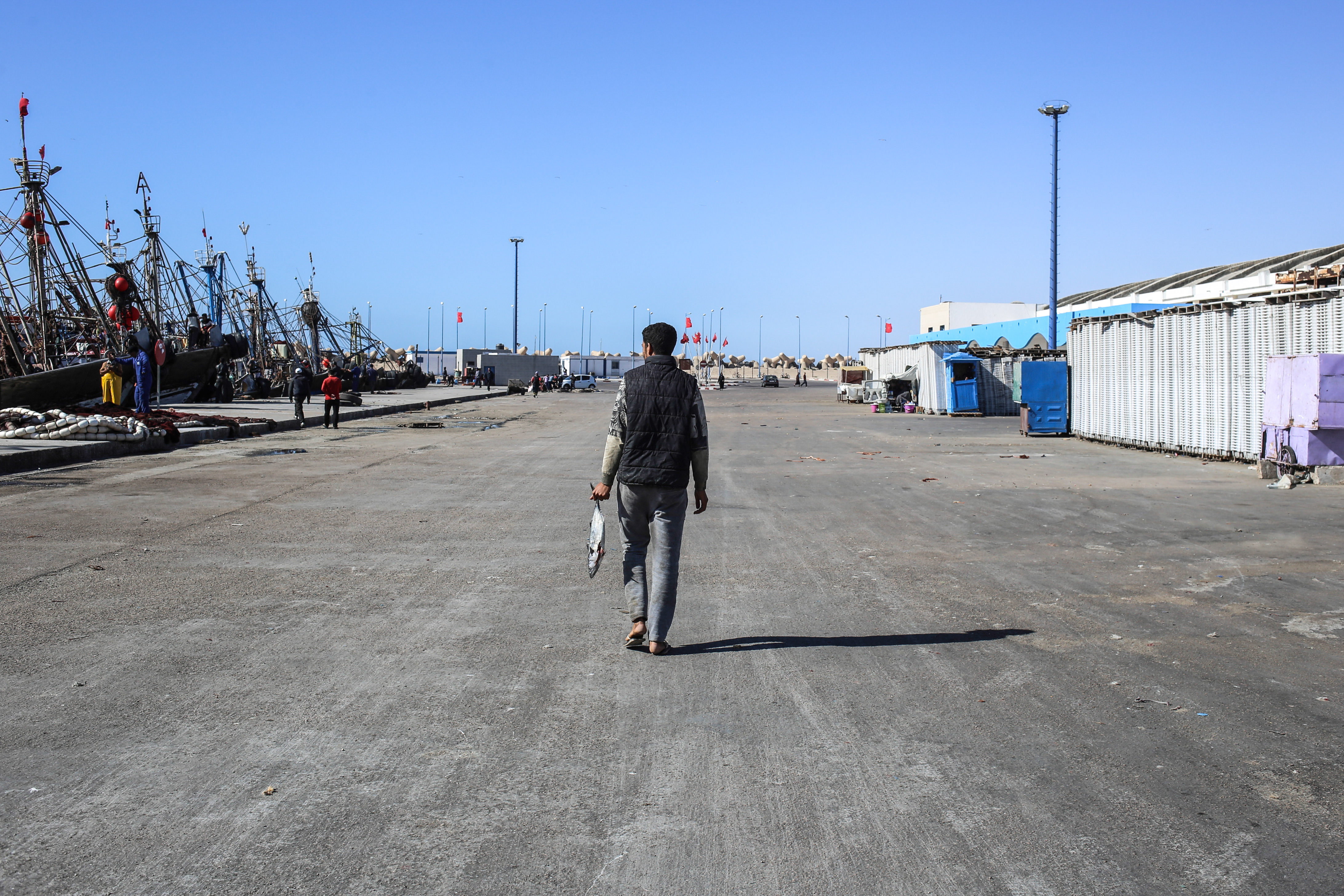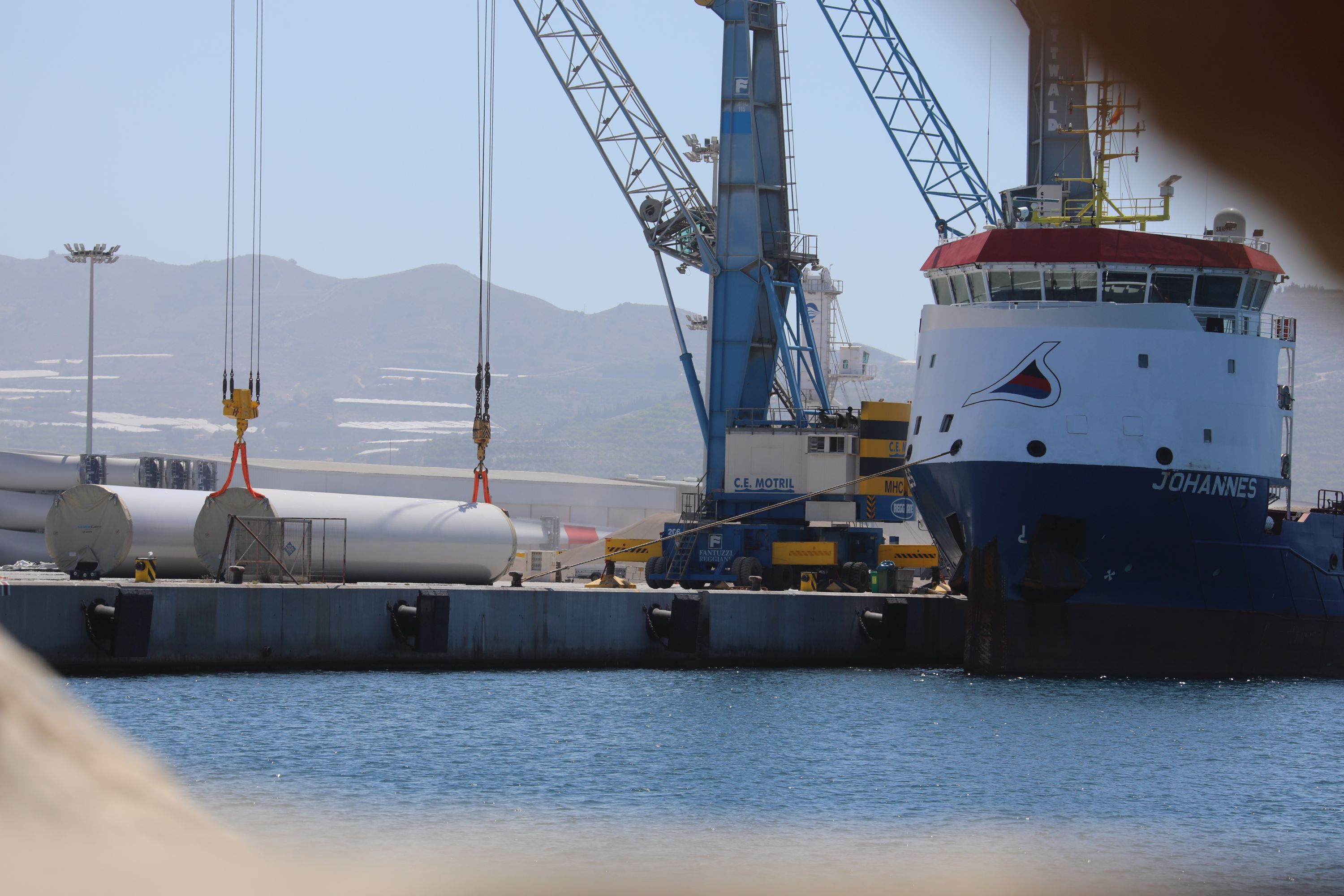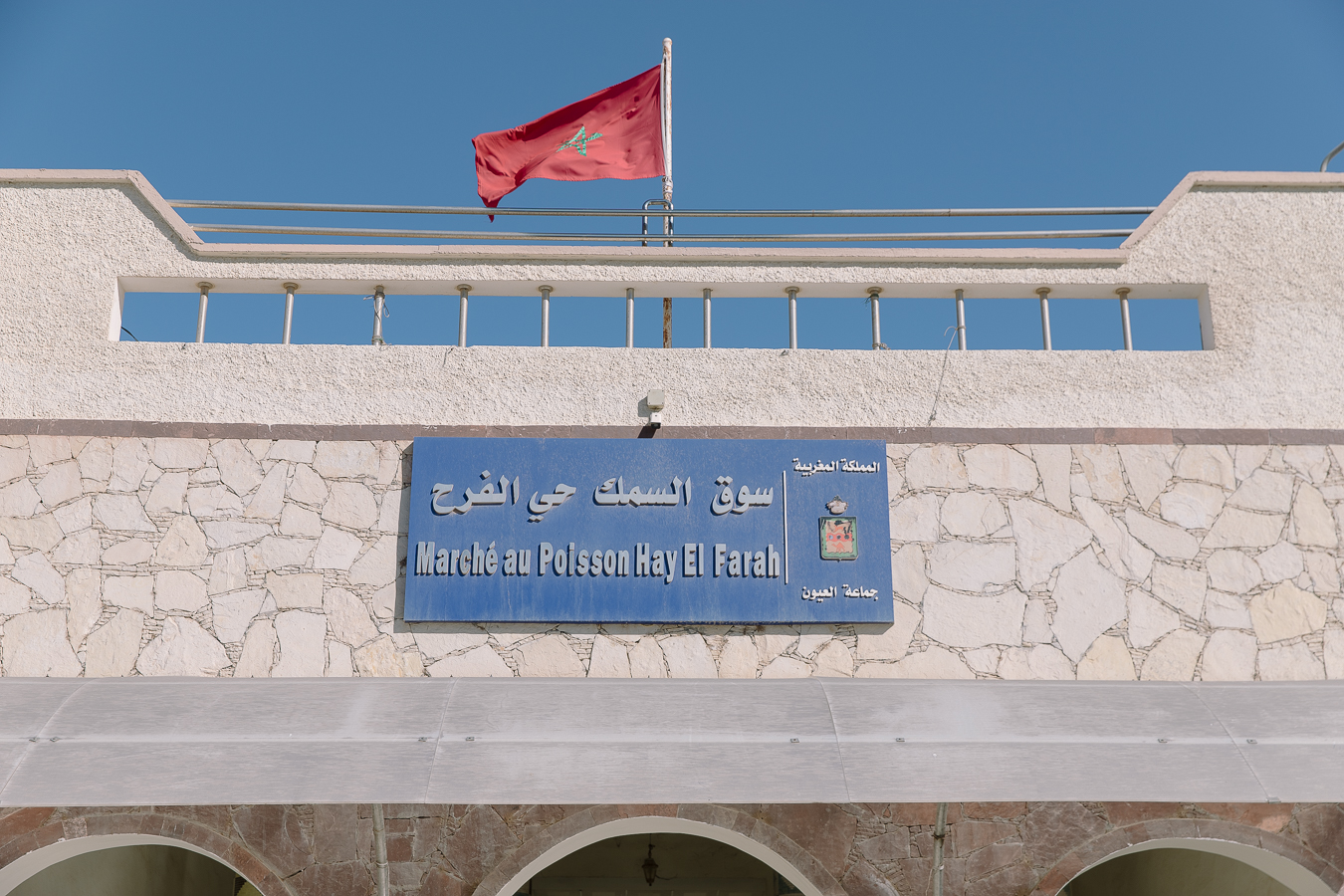
The Spanish company today, yet again, refers to the territory as part of Morocco.
Photo above: Siemens Gamesa masts being loaded for export to Western Sahara, in Motril, Spain, July 2021.
This morning, Siemens Gamesa published an article on its website to promote the blade factory it has opened in Tangier four years ago. The text shows that the company has not moved an inch in its interpretation of the Western Sahara conflict.
“The Tangier plant plays a big role in enabling this, having supplied blades to the 200-MW Aftissat and 180-MW Midelt wind farms in Morocco’s south, with the last two relying on “100% made in Morocco” blades. The plant is also currently supporting the 300 MW Boujdour project, also part of the 850-MW integrated wind project being developed by Siemens Gamesa, Nareva and ENEL Green Power”, the text reads. Read the full text here [or download].
The 200 MW Aftissat and the 300 MW Boujdour wind farms are however not in “Morocco’s south”, but in occupied Western Sahara. Western Sahara Resource Watch has documented that the latter project is currently under construction.
Siemens Gamesa made an identical statement in September 2020, when it announced it had received an order for supplying wind turbines “for the Boujdour wind farm, located in the South of Morocco”. Read that particular press release here.
Following last year's statement, Western Sahara Resource Watch condemned Siemens Gamesa.
"For eight years, owners of Siemens have tried to convince the company of supporting principles of international law and respecting the Saharawi people's right to self-determination. This latest contract and press release regretfully illustrate that the company has shown no improvement in their business practice or in the understanding that they are operating on occupied land, outside of Morocco's international borders", Sylvia Valentin, chair of Western Sahara Resource Watch stated then.
Siemens AG announced its first contract in “Southern Morocco” back in 2012.
“Today's statement proves how unserious Siemens Gamesa is when it claims to have taken aspects of international law into account. As we announced last year, it seems that constructive engagement undertaken by ethical investors falls on deaf ears within the company. It is time for investors to exclude Siemens Gamesa from their portfolios”, said Valentin regarding the continued misrepresentation by the company.
"A company claiming to be operating sustainably cannot also contribute to the violation of international law and human rights", Valentin told.
What Siemens Gamesa’s press release of this morning also fails to mention, is that the Tangier factory was part of the deal the company had struck with the Moroccan government to develop the 850 MW integrated wind project - half of that envisioned power generation to be installed in occupied Western Sahara through the 300 MW Boujdour and 100 MW Tiskrad wind farms.
On 6 October 2021, Western Sahara Resource Watch published a large report - Greenwashing occupation - on Morocco's renewable energy plans in the territory. Siemens Gamesa's operations were widely covered.
Work on the 300 MW Boujdour farm – the biggest energy infrastructure project in Western Sahara to date – is ongoing. As reported by WSRW, Siemens Gamesa started shipping windmill components for the farm in June this year.
Just a week ago, the EU Court of Justice issued its fifth ruling in a row concluding that Western Sahara is separate and distinct from Morocco and that the latter has no sovereignty or administering mandate over the territory. The Court ordered the annulment of two EU-Morocco bilateral agreements that had been applied to Western Sahara, because the EU had failed to obtain the consent from the people of Western Sahara through their UN-recognised representation Polisario. The Court was clear that consent by the Saharawis through Polisario cannot be substituted by a consultation of interested parties on potential benefits – a narrative that Siemens Gamesa and its partners keep hiding behind in defence of their activities in the last colony in Africa.
The approach to the conflict that Siemens Gamesa and Enel are taking is identical to the one found unvalid by the EU Court.
WSRW wrote Siemens AG on 06.03.2012, 19.06.2012, 03.07.2013, 26.09.2016, 07.12.2017, and received response from Siemens AG on 10.05.2012, 10.10.2016, 08.01.2018. WSRW wrote Siemens Gamesa, 01.10.2018 and 20.08.2021. Siemens Gamesa wrote WSRW on 16.11.2018, 24.04.2020, 07.04.2021 and 27.09.2021. WSRW wrote Siemens Energy on 18.02.2021, Siemens Energy responded on 23.03.2021.
New report: Certified occupation
International certification standards embellish Morocco’s controversial trade with fisheries and agricultural products in occupied Western Sahara, new report documents.
Certification giant SGS points fingers elsewhere
SGS blames everyone else for mistakes on MarinTrust certificates it had issued to Moroccan companies in occupied Western Sahara.
New report: Greenwashing Occupation
Out now: WSRW today publishes a new report outlining the massive - and deeply problematic - renewable energy projects that Morocco is developing in occupied Western Sahara.
GMP+ does not check if “sustainable” fish is legally caught
The world’s largest certification scheme for “safe and sustainable animal feed” does not check whether its certified fish feed companies source from illegal fisheries in occupied Western Sahara, where catches violate the Saharawi people’s right to self-determination.



